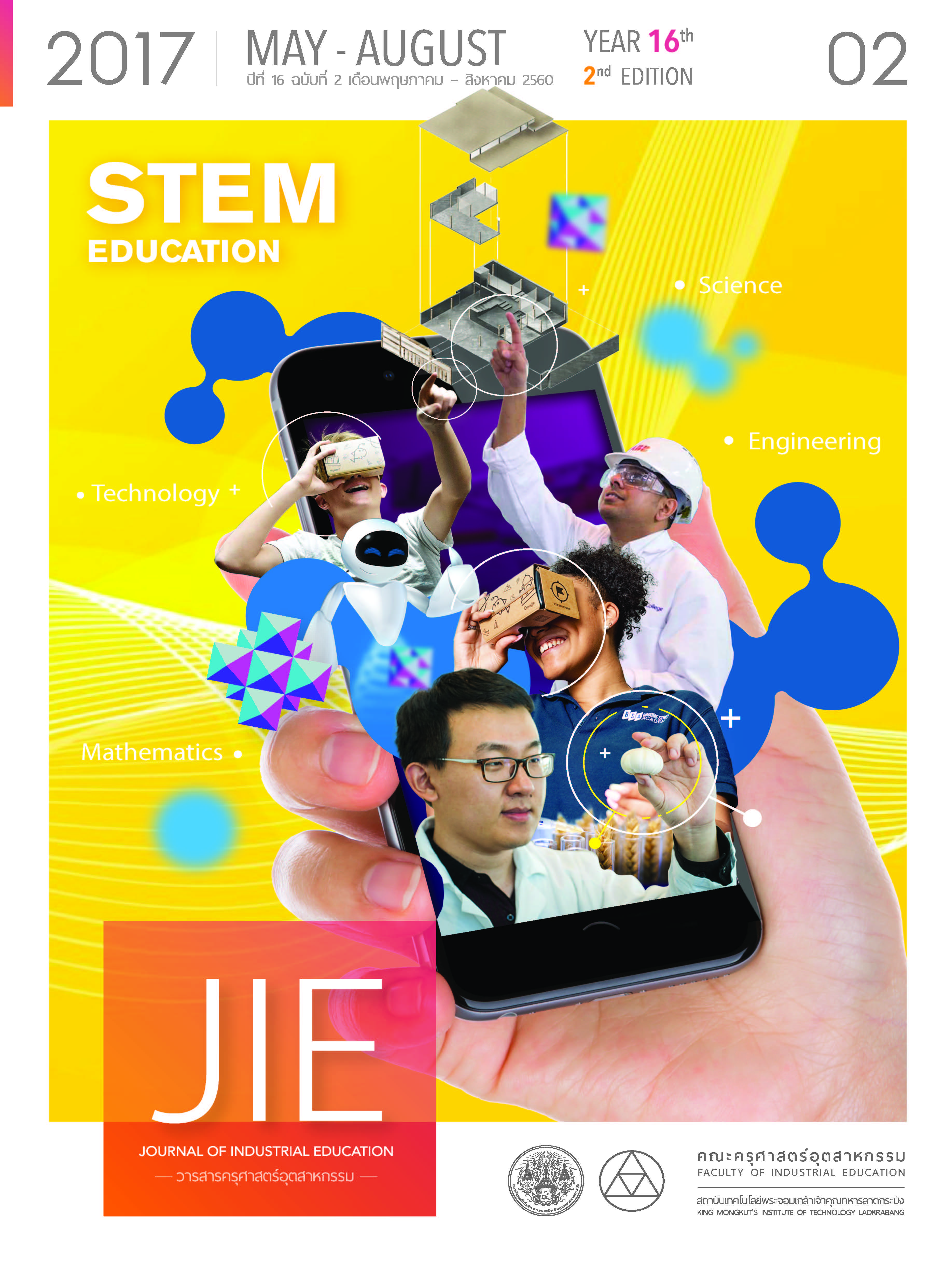ทักษะศตวรรษที่ 21 ที่จำเป็นของผู้เรียนเทคนิคและอาชีวศึกษาในประเทศไทย
คำสำคัญ:
ทักษะศตวรรษที่ 21, เทคนิคและอาชีวศึกษา, วิทยาศาสตร์เทคโนโลยี, วิศวกรรม, คณิตศาสตร์, สะเต็มศึกษา (STEM), การแก้ปัญหา, การคิดเชิงวิพากษ์, การสื่อสาร, การประสานความร่วมมือ, การคิดสร้างสรรค์บทคัดย่อ
การจัดการศึกษาด้านเทคนิคและอาชีวศึกษาในประเทศไทย ผู้ที่มีส่วนเกี่ยวข้องจำเป็นต้องจัดเตรียมให้ผู้เรียนมีความพร้อมที่จะสามารถดำรงชีวิต และปฏิบัติงานให้ได้ในศตวรรษที่ 21 เพื่อช่วยให้นักเรียนด้านเทคนิคและอาชีวศึกษาประสบความสำเร็จในการศึกษาเรียนรู้และในการคิดและแนวการปฏิบัติร่วมสมัย จึงมีความจำเป็นที่จะต้องจัดให้นักเรียนได้รับความรู้หลัก และทักษะสำคัญแห่งศตวรรษที่ 21 อันได้แก่ (1) ทักษะด้านวิทยาศาสตร์ เทคโนโลยี วิศวกรรมศาสตร์และ คณิตศาสตร์ (ทักษะ STEM); (2) ทักษะการแก้ปัญหา และ (3) ทักษะ (4 Cs) การคิดเชิงวิพากษ์ การสื่อสาร การประสานความร่วมมือ และ ความคิดสร้างสรรค์
เอกสารอ้างอิง
[2] Association for Career and Technical Education [ACTE]. 2014. CTE today! Retrieved March 16, 2017, from https://www.acteonline.org/CTETodayOct14
[3] Regional TVET Conference 2014, Jakarta, Indonesia (2014). Ensuring TVET quality. Retrieved March 16 2017 from https://www.regional-tvet-conference-indonesia.org/en/article/67.ensuring-tvet- quality.html
[4] Joseph Bishop. 2017. Partnership for 21st Century Skills (P21). Director of Strategic Initiatives, P21. Retrieved April 1 2017, from www.imls.gov/assets/1/AssetManager/Bishop%20Pre-Con%202.pdf.
[5] Jongjit R. Reena T. 2015. Challenges in Producing Thai Skilled Labor for AEC Job Market. Population and Social Diversity in Thailand 2015. Retrieved from https://www.ms.ipsr.mahidol.ac.th/ ConferenceXI/Download/Book/447-IPSR-Conference-A09-fulltext.pdf (March 15, 2017)
[6] UNESCO Bangkok (2011). Higher education and technical and vocational education and training. Retrieved March 20, 2017, from https://www.unescobkk.org/education/resources/resources/education-system- profiles/thailand/higher-tvet/
[7] Dana L. Zeidler. 2016. STEM education: A deficit framework for the twenty first century? A sociocultural socioscientific response. Cult Stud of Sci Educ, 11, p. 11–26.
[8] National Academy of Sciences [NAE] (2011). Successful K-12 STEM Education: Identifying Effective Approaches in Science, Technology, Engineering, and Mathematics. Washington, DC: National Academies Press.
[9] Bybee, R.W. (2010). Advancing STEM education: A 2020 vision. The Technology and Engineering Teacher, 70(1), p. 30-35.
[10] Adams, S. (2014). The 10 skills employers most want in 2015 graduates. Forbes. Retrieved March 20, 2017, from https://www.forbes.com/sites/susanadams/2014/11/12/the-10-skills- employers-most-want-in-2015-graduates/
[11] Buck Institute for Education [BIE] (n.d.). Why project based learning (PBL)?. Retrieved March 20, 2017, from, https://bie.org/about/why_pbl
[12] S. P. Tayal. 2013. Engineering Design Process. International Journal of Computer Science and Communication Engineering. IJCSCE Special issue on “Recent Advances in Engineering & Technology” NCRAET. pp. 1-5.
[13] National Research Council – NRC (2012). A Framework for K–12 Science Education. Retrieved March 21 2017 from https://www.nap.edu/catalog.php?record_id=13165
[14] Herrmann, E. (2015). The 4 C’s of 21st century learning for ELLs: Critical thinking. Retrieved March 21, 2017, from https://exclusive.multibriefs.com/content/the-4-cs-of-21st-century-learning-for-ells- critical-thinking/education
[15] Thoughtful Learning (n.d.). What are learning skills?. Retrieved March 21, 2017, from https://thoughtfullearning.com/resources/what-are-learning-skills
[16] Adirek Y., Namon J. and Panita W. 2012. Teaching and Learning in a Virtual Classroom for Higher Education Level. Journal of Industrial Education, 11(1), p. 75-81.
ดาวน์โหลด
เผยแพร่แล้ว
รูปแบบการอ้างอิง
ฉบับ
ประเภทบทความ
สัญญาอนุญาต
"ข้อคิดเห็น เนื้อหา รวมทั้งการใช้ภาษาในบทความถือเป็นความรับผิดชอบของผู้เขียน"



